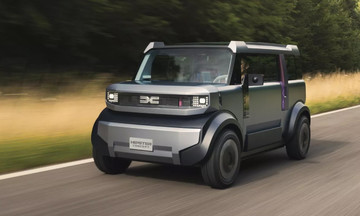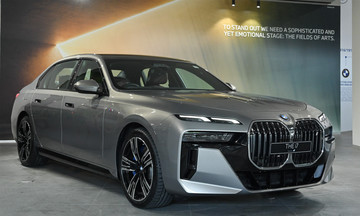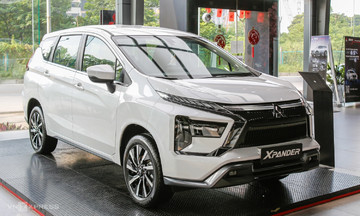This move, if implemented, would mark a significant shift in automotive design, especially for new energy vehicles (NEVs) that have widely adopted this feature.
According to a research and development expert from an automaker, discussions are underway regarding new regulations that would prohibit fully retractable door handles, those flush with the car's body. Traditional door handles would still be permitted, but they must have a mechanical backup to ensure reliable operation.
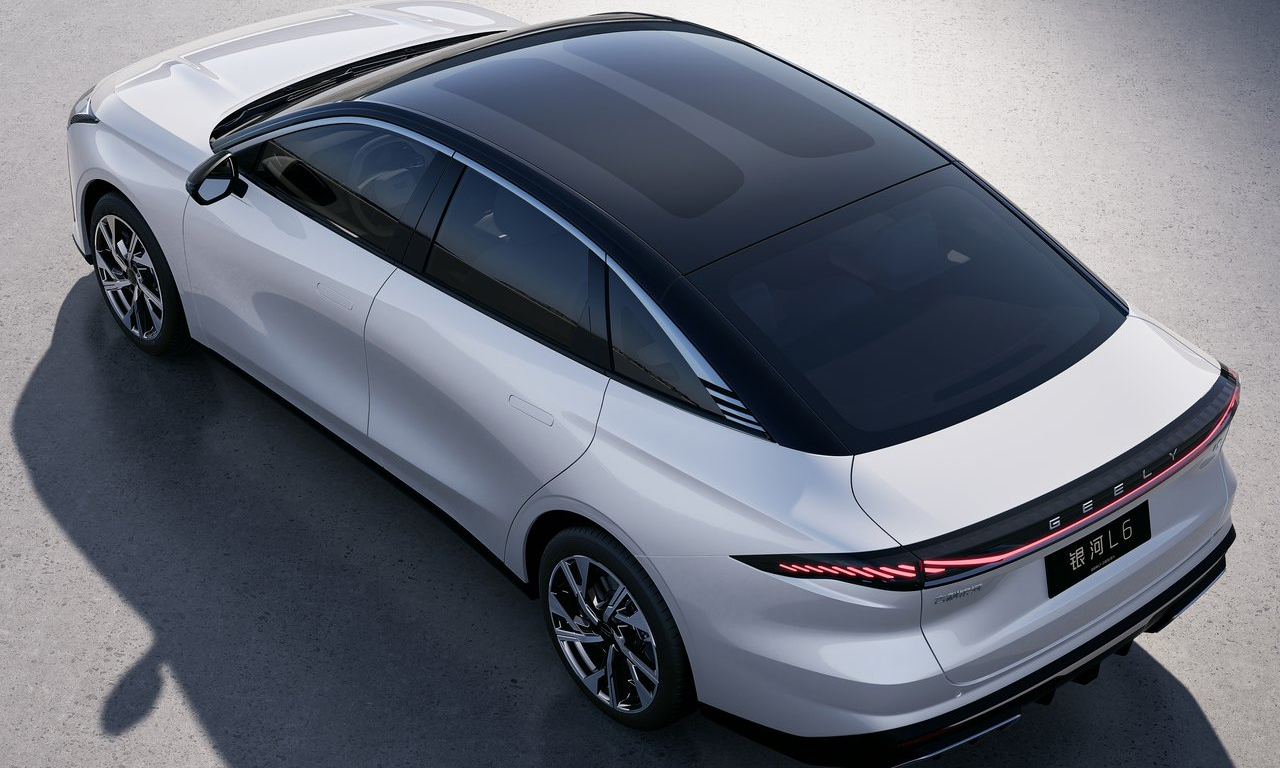 |
The Geely Galaxy L6 new energy vehicle with hidden door handles. Photo: Geely |
The Geely Galaxy L6 new energy vehicle with hidden door handles. Photo: Geely
Sources say a draft of the mandatory standards for door handles is expected to be finalized this month. The proposed ban on fully retractable door handles includes a one-year transition period. Enforcement is expected to begin in 7/2027, meaning new vehicles sold in China after this date will no longer feature these designs. Discussions also include automatic unlocking mechanisms in non-standard conditions, such as accidents.
This news has created a stir in the industry, and although the ban is still under discussion, the potential impact is substantial. This regulatory move highlights the growing concern over hidden door handles, which have faced widespread public criticism for their unreliable functionality.
The rise and fall of a design trend
Fully retractable door handles have become a popular design element on modern NEVs, often categorized as "lever type" (physical mechanism) and "pop-out electronically controlled type" (motorized). Praised for their futuristic aesthetics and aerodynamic benefits, their practicality and safety have been increasingly questioned.
Engineers' calculations reveal that a 0.01 Cd reduction in drag coefficient, often attributed to hidden handles, equates to a minimal saving of approximately 0.6 kWh per 100 km. For home charging, the cost savings are negligible. Furthermore, reports from the Society of Automotive Engineers (SAE) indicate that hidden door handles only improve the drag coefficient of sedans by 0.005-0.01 Cd, significantly lower than the 0.03 Cd figure often touted by manufacturers. The added 7-8 kg of weight from the motor and mechanical structure may even negate any aerodynamic benefits.
Beyond these questionable efficiency claims, hidden door handles present significant drawbacks.
Electronic door handles are reportedly three times more expensive than mechanical ones, yet they have an eight times higher failure rate. This contributes to increased NEV repair costs, with one leading new energy brand reporting that door handle failures account for 12% of total vehicle repairs, often requiring costly replacement of the entire assembly.
In accidents involving power loss or fire, electric door handles (both exterior and interior) may malfunction, seriously hindering rescue and escape efforts.
In a 2024 "frozen door" incident in Changchun, passengers in an NEV were trapped due to a frozen handle motor, missing crucial rescue time.
During the 2024 heavy rain season in Guangdong, numerous vehicles with electric door handles experienced short circuits, rendering the doors inoperable and forcing passengers to break windows to escape.
Crash tests by the China Insurance Automotive Safety Index (C-IASI) show that vehicles with electronic door handles only achieved a 67% success rate in side impacts, contrasted with a 98% success rate for mechanical handles.
The National Automotive Sampling System (NASS) reported a 47% increase in accidents caused by faulty door handles in 2024, with hidden handles accounting for 82% of these incidents. The Consumers Association noted a 132% year-on-year increase in complaints regarding hidden door handles pinching children's fingers, including cases of serious fractures.
Users often find them inconvenient, especially in unfamiliar vehicles, and they are prone to malfunctioning in harsh weather conditions like freezing temperatures.
A new solution: semi-retractable door handles
Some automakers have adopted a more cautious approach. For example, Volkswagen opted for semi-retractable door handles, balancing aesthetics with practicality and safety.
The new generation A5L and Q6L e-tron models from the FAW-Audi joint venture feature semi-retractable door handles with integrated microswitches. In the event of a collision, a red pull cord automatically releases, acting as a mechanical handle for external rescuers.
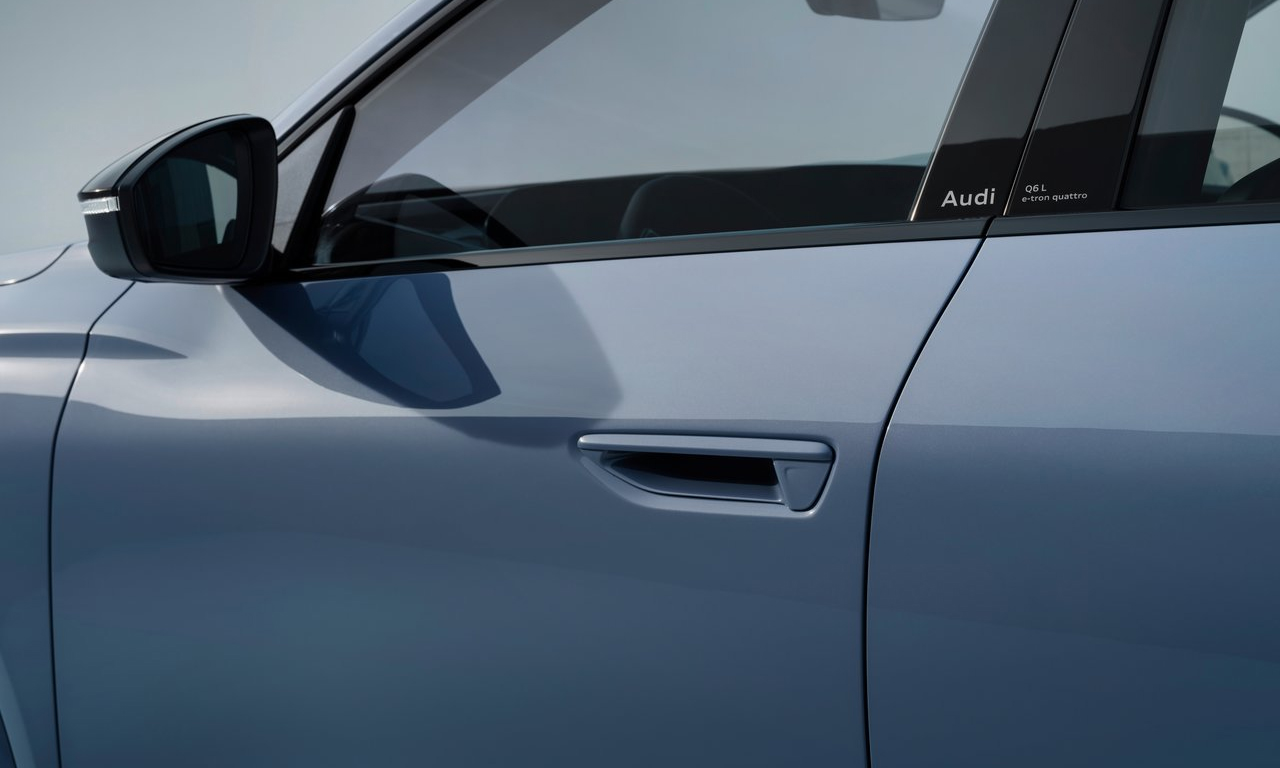 |
Semi-retractable door handles on the Audi Q6L e-tron. Photo: Audi |
Semi-retractable door handles on the Audi Q6L e-tron. Photo: Audi
Wei Jianjun, Chairman of Great Wall Motor, publicly criticized hidden door handles, arguing that "their contribution to drag reduction is negligible", and they are "heavy, poorly sealed, noisy, and reliant on electrical power, creating hazards".
This potential ban follows the Ministry of Industry and Information Technology (MIIT) initiating revisions to the mandatory national standard "Safety Technical Requirements for Automobile Door Handles" in 5/2025, specifically addressing the safety risks posed by current hidden door handle designs. This move is seen as the beginning of a broader regulatory effort to enhance automotive safety.
Besides door handles, other controversial design trends, such as eliminating physical buttons in favor of full touchscreen displays, panoramic sunroofs, and electronic rearview mirrors, have also drawn criticism. Concerns have also been raised about the misuse of "steering wheel weights" to bypass hands-off detection in advanced driver-assistance systems (ADAS), leading to accidents.
Internationally, regulators are also responding. The European New Car Assessment Programme (Euro NCAP) announced that from 2026, vehicles integrating critical functions like turn signals, hazard lights, horns, wipers, and emergency calls into touchscreens without physical controls will not achieve a 5-star safety rating.
My Anh (according to CarNewsChina)




